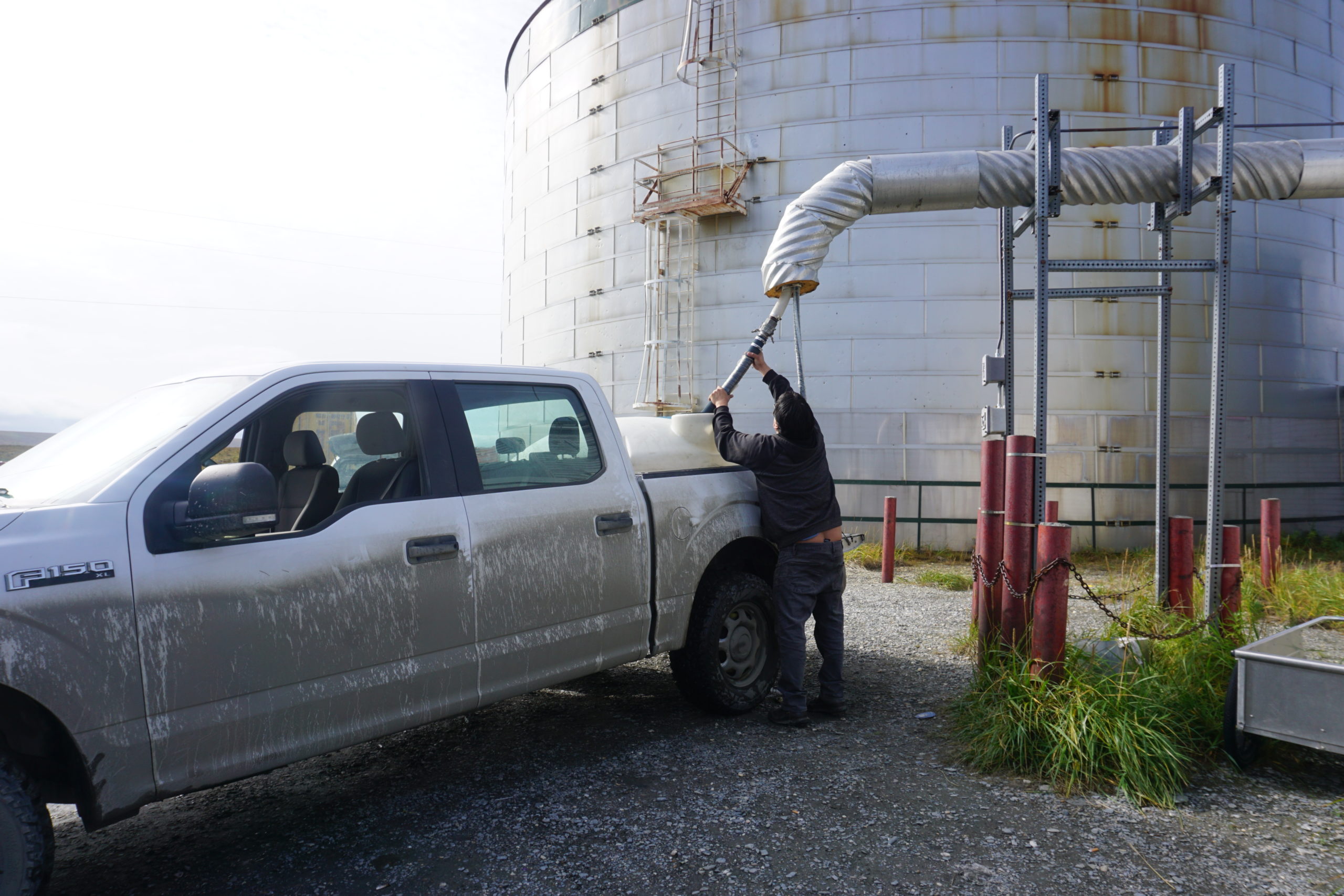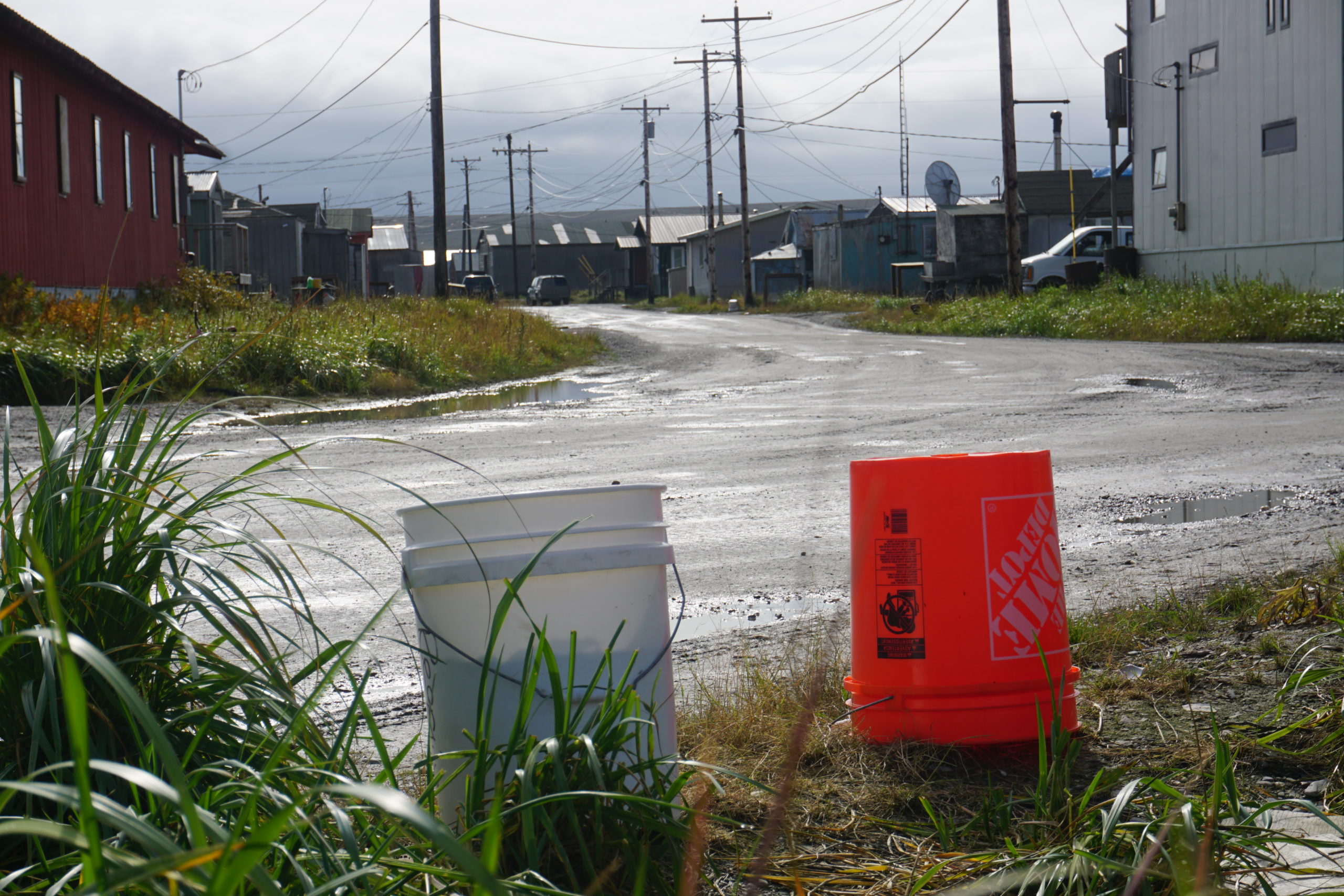With money pouring in for Alaska water and sewer projects, focus shifts to ensuring sustainability
“I think the biggest barrier right now is a clear path for the communities to be sustainable once the infrastructure is built.”

Historically, the biggest challenge to getting adequate water and sewer service in remote communities in rural Alaska was lack of money. Now, thanks to the Infrastructure Investment and Jobs Act passed in 2021, there is plenty of money from the federal government, Alaska Department of Environmental Conservation officials told legislators on Tuesday.
That presents a different challenge, said Carrie Bohan, programs manager at the department’s Division of Water, at a hearing of the House Community and Regional Affairs Committee.
[For some Alaska villages, the lack of modern water and sewer service means more health risks]
“I think the biggest barrier right now is a clear path for the communities to be sustainable once the infrastructure is built,” she said. If not addressed now, communities wind up with systems they cannot afford to operate or maintain, she said. “How can we move forward and be a partner in this effort to support the communities without hanging them out to dry, then?”
In all, 31 communities in Alaska are classified as “unserved,” which means that under 55% of residents have access to running water. An additional 17 communities are considered “underserved,” with under 80% of residents lacking such access.

Thanks to the Infrastructure Investment and Jobs Act, which gives $3.5 billion to the Indian Health Service for water and sanitation projects nationwide, there is enough money to build projects in all of those communities, Bohan said.
For the state budget starting in July, $222 million is expected from the federal government, most of which is from the Indian Health Service, a major recipient of Infrastructure Investment and Jobs Act funds, according to the department’s presentation at the hearing. Gov. Dunleavy, in his capital budget, proposed $25 million in state money, a sum that is intended as the state’s match for Environmental Protection Agency and U.S. Department of Agriculture funding, Bohan said.
But the job does not end even after projects are built and local people are trained and equipped to service them, she said.
Existing facilities, including those in larger communities, need ongoing improvements and upgrades, she said.
“We have 40-year-old systems that have had little maintenance or are constructed of materials that are no longer really appropriate and are breaking down, such as Unalakeet,” she said, referring to an ongoing project that is developing a new water source and replacing an old water-distribution system that routinely fails: “So there might be a resolution to the unserved communities, but this is an ongoing process well beyond the infrastructure funding to help these communities maintain the systems that they have.”
Conditions outside of community control can also cause problems, she said, citing weather extremes and the changing climate.
“The ground shifts and the infrastructure shifts. We have changes in when things thaw and freeze,” she said. “Things are not as predictable as they used to be.”

There are two pending bills that are aimed at making it easier for communities to get Village Safe Water funding.
One, House Bill 178, would potentially bypass the state’s longstanding system of using scores to weigh community needs and capacity.
Randy Bates, director of the department’s Division of Water, said that bill as currently written would not change the department’s need to consider capacity. However, there is a reevaluation of the scoring system underway to see if it remains appropriate or if some other system would be better, he said. “If we can work this correctly. it’ll set the communities up for success long-term,” he said.
The other measure, House Bill 114, seeks to expand the definition of communities eligible for Village Safe Water Act funding. Communities with up to 1,500 people would be eligible, under the bill; the current population cutoff is 1,000.
The bill’s sponsor. Rep. Kevin McCabe, R-Big Lake, said it is mainly aimed at Talkeetna, a community in his district, but it would likely affect about five other communities. Talkeetna has about 1,100 residents, according to state data, is on the road system and is currently not considered a village.
Bates told the committee there is enough money and time to expand water and sewer service around the state correctly.
“This is not one-time funding, one fiscal year. This is five fiscal years’ worth of significant money for the infrastructure program and the SRF program,” he said referring to the state revolving fund program.
“We’re going to have what appears to be 10 years’ worth of construction and operation work to be able to expend these monies,” he said.
This story was first published by Alaska Beacon and is republished here under a Creative Commons license. You can read the original here.